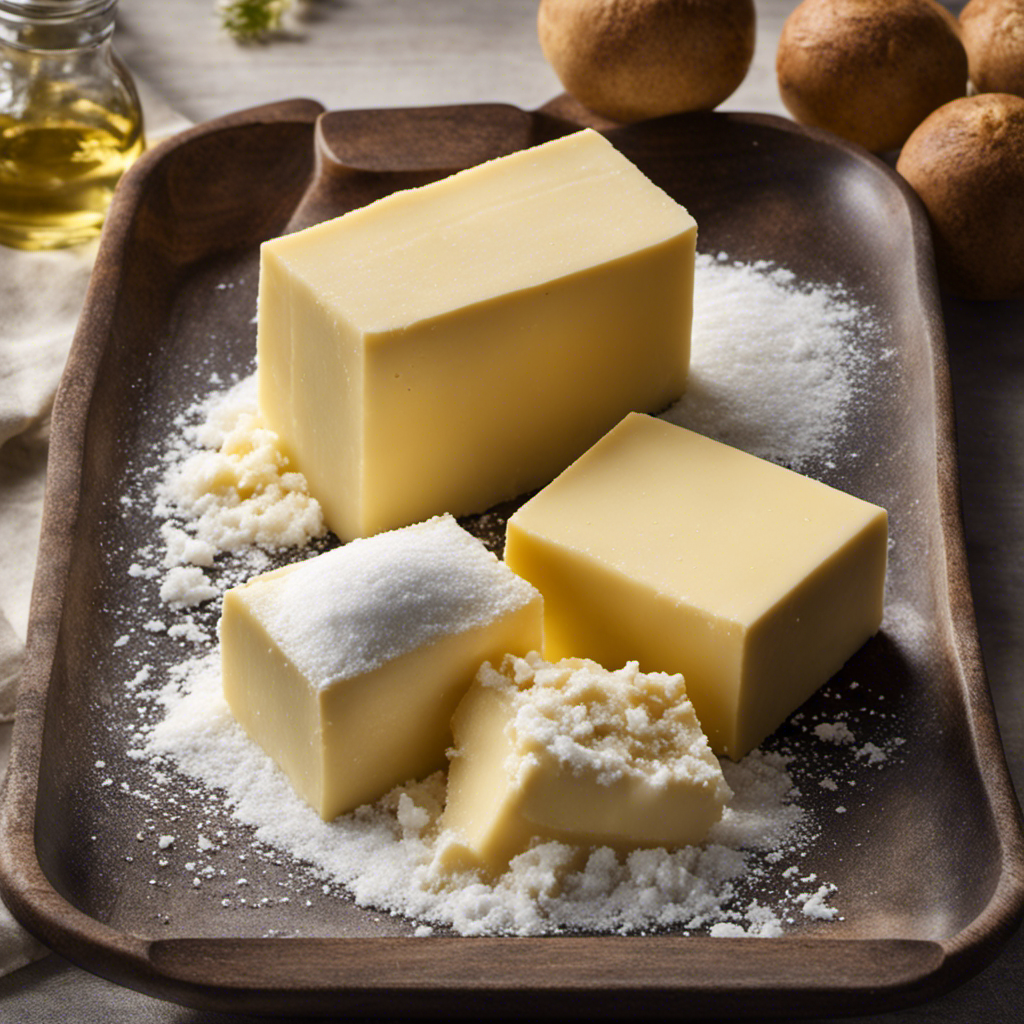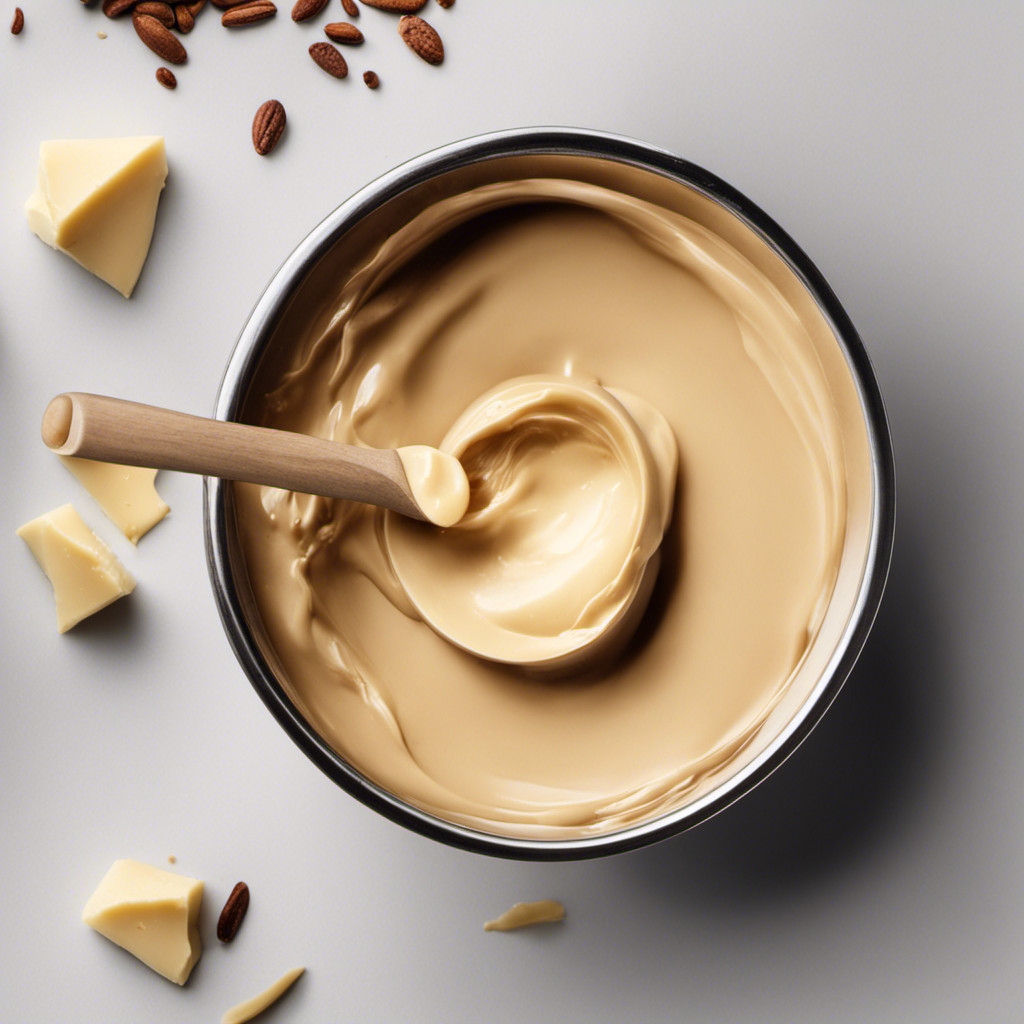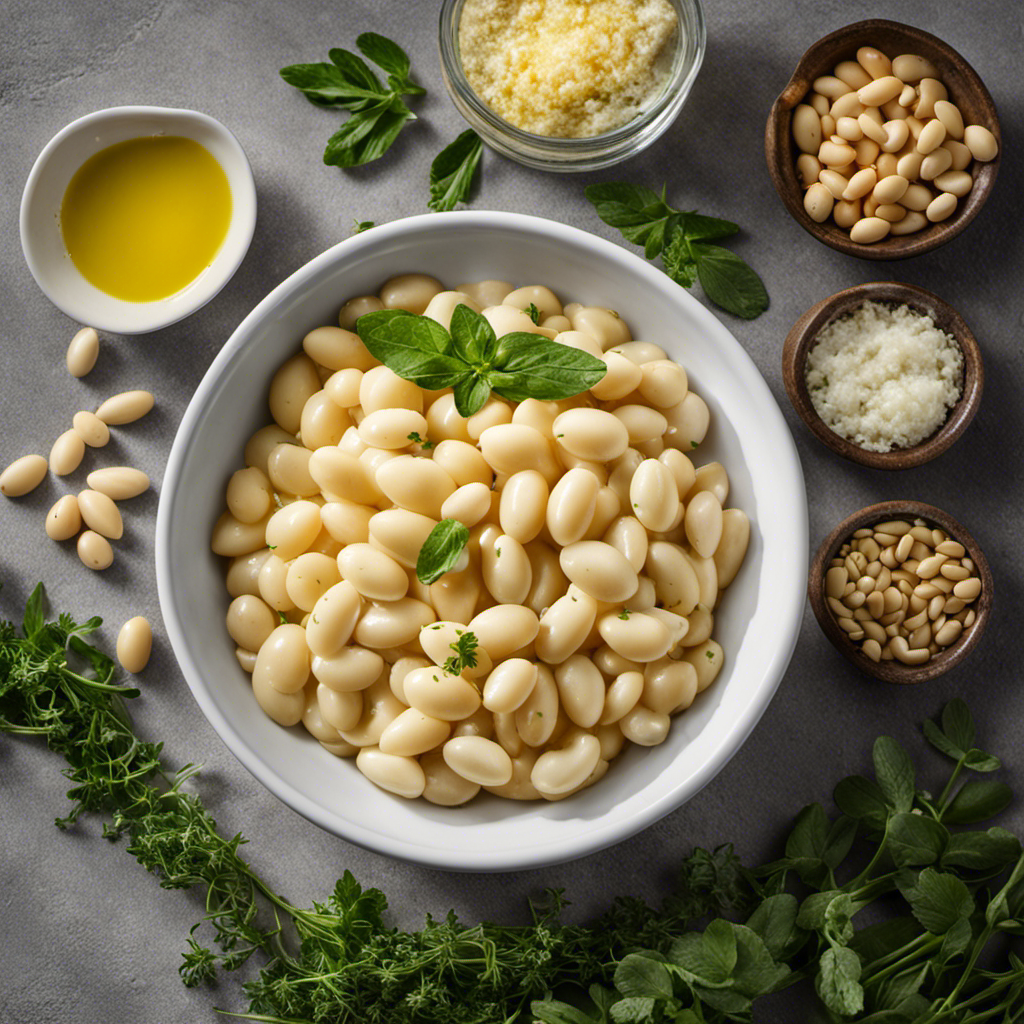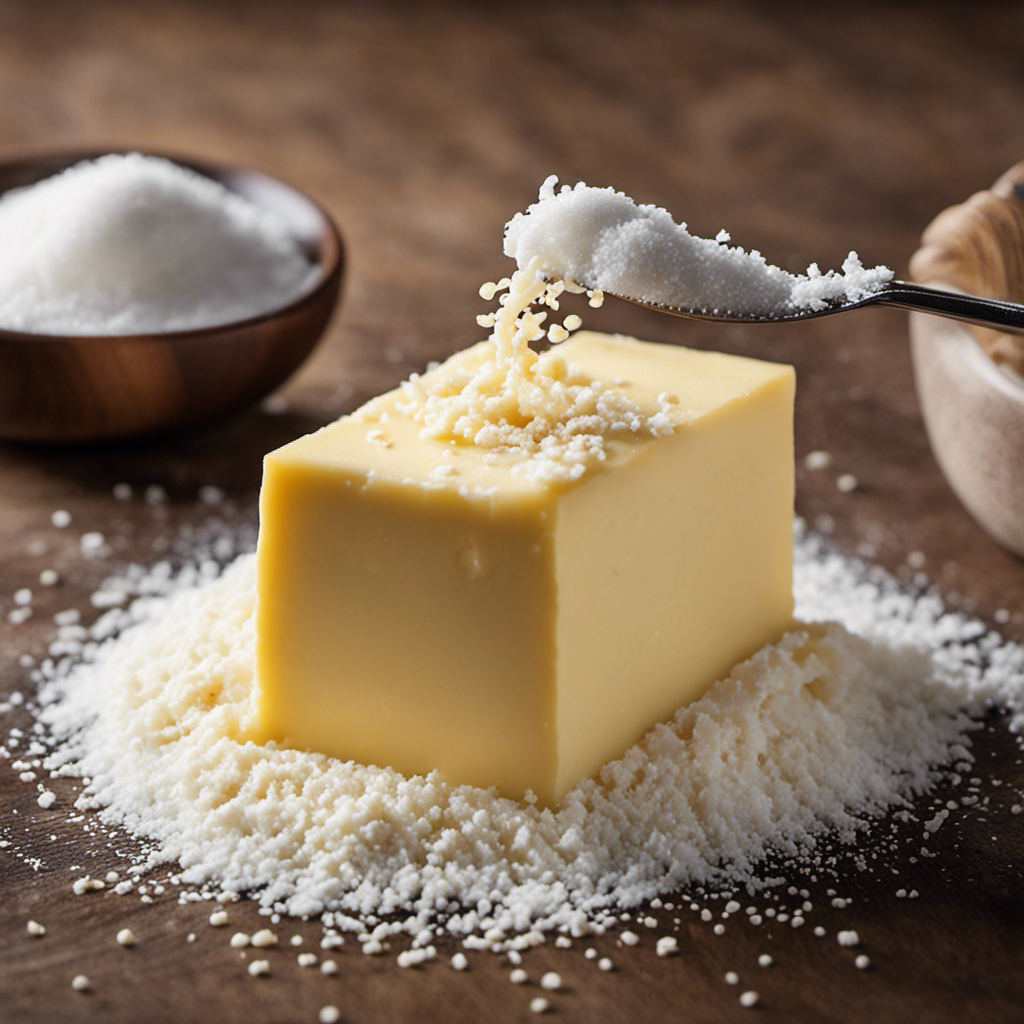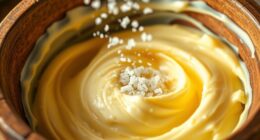I enjoy butter, but occasionally I feel that unsalted butter is missing something. That’s why I have found a straightforward and efficient method to turn unsalted butter into salted butter.
In this article, I’ll share the importance of salt in butter, the tools and ingredients you’ll need, step-by-step instructions for salting butter, and some tips and tricks for achieving perfectly salted butter.
Get ready to elevate your butter game and add a flavorful twist to your favorite dishes!
Key Takeaways
- Salt enhances the flavor and preserves the quality of butter.
- Alternative ways to flavor butter without salt include using herbs and spices.
- Different types of salt can be used to salt butter, such as sea salt, kosher salt, and fleur de sel.
- Experimentation with small amounts of salt is key to finding the perfect taste.
The Importance of Salt in Butter
Salt is essential in butter because it enhances the flavor and preserves the quality. While unsalted butter may be preferred for health reasons, it lacks the savory taste that salt brings. However, there are alternative ways to flavor butter without using salt.
One option is to add herbs and spices like garlic, rosemary, or chili flakes. These ingredients not only add flavor but also provide health benefits. For example, garlic is known for its antibacterial and antiviral properties, while rosemary contains antioxidants that can boost the immune system.
Another way to flavor butter without salt is to use citrus zest or juice. The tanginess of lemons or oranges can add a refreshing twist to the butter.
Tools and Ingredients Needed
To turn regular butter into salted butter, you’ll need a few essential tools and ingredients. Here’s what you’ll need:
-
Unsalted butter: Start with a good quality unsalted butter as the base for your salted butter. This will allow you to control the amount of salt you add.
-
Salt: There are different types of salt you can use to flavor your butter. Some popular options include sea salt, kosher salt, and fleur de sel. Experiment with different varieties to find your preferred taste.
-
Butter flavoring: If you want to enhance the buttery flavor even more, you can add butter flavoring to your salted butter. This is optional, but it can give your butter a richer taste.
-
Mixing bowl and spatula: You’ll need a mixing bowl to combine the butter, salt, and flavoring. A spatula will help you thoroughly mix the ingredients together.
With these tools and ingredients, you’ll be able to easily transform regular butter into delicious salted butter that is perfect for spreading on toast or using in your favorite recipes.
Step-by-Step Instructions for Salting Butter
Using the unsalted butter as your base, it’s time to add the desired amount of salt to create your perfectly seasoned butter. When it comes to choosing the type of salt, there are a variety of options available.
One popular choice is kosher salt, known for its large, coarse grains that dissolve easily and provide a nice crunch. Sea salt is another great option, offering a subtle briny flavor that enhances the butter’s richness. Himalayan pink salt is gaining popularity for its unique mineral composition and delicate flavor.
Now let’s talk about the health benefits. Unsalted butter is often recommended for individuals looking to reduce their sodium intake. It allows you to control the amount of salt added, which is beneficial for those with specific dietary needs. Additionally, unsalted butter contains all the natural fats and nutrients, making it a healthier choice compared to salted butter that may contain additives.
Tips and Tricks for Perfectly Salted Butter
When adding seasoning to your butter, it’s important to consider the type of salt you prefer. Here are some tips and tricks for perfectly salted butter:
-
Alternative salt options for flavoring butter:
- Sea salt: adds a subtle briny flavor to the butter.
- Himalayan pink salt: provides a unique mineral taste.
- Smoked salt: infuses a smoky flavor into the butter.
- Garlic salt: adds a savory and garlicky kick.
-
Pros of using salted butter in baking recipes:
- Convenience: eliminates the need to add additional salt.
- Enhanced flavor: brings out the richness and depth in baked goods.
-
Cons of using salted butter in baking recipes:
- Lack of control: the salt content may vary between brands.
- Limited versatility: may not be suitable for recipes that require unsalted butter.
-
Experimentation is key: start with small amounts of salt and adjust according to your taste preferences.
Enjoy the deliciously seasoned butter in your favorite recipes!
Storing and Using Salted Butter
For best results, remember to store your salted butter in an airtight container in the refrigerator.
When it comes to salting butter, there are various types of salt you can use. The most common options include kosher salt, sea salt, and fleur de sel.
Kosher salt is great for general use and adds a nice flavor to the butter. Sea salt, on the other hand, has a more pronounced taste and can enhance the overall flavor profile of the butter. Fleur de sel, a delicate and expensive salt, is perfect for adding a finishing touch to your butter.
Now that you have your salted butter, you can use it in a variety of recipes and dishes. It can elevate the taste of baked goods, such as cookies and cakes, as well as be used to enhance the flavors of sautéed vegetables, pasta dishes, and even grilled meats.
Frequently Asked Questions
Can I Use Any Type of Salt to Salt My Butter?
Yes, you can use different types of salt to salt your butter. However, it’s essential to use a fine-grained salt for better distribution. Salted butter can be used for baking, but adjust the amount of additional salt accordingly.
Is It Necessary to Refrigerate Salted Butter?
No, it’s not necessary to refrigerate salted butter. There are alternative methods for preserving it without refrigeration. However, refrigerated salted butter tends to have a firmer texture and slightly milder taste compared to non-refrigerated salted butter.
Can I Use Unsalted Butter to Make Salted Butter?
Yes, you can use unsalted butter to make salted butter. Simply mix in salt until you reach your desired taste. Salted butter is commonly used in baking recipes and adds a savory flavor to cooking.
Can I Adjust the Amount of Salt According to My Taste Preferences?
Yes, you can adjust the amount of salt according to your taste preferences. If using unsalted butter, simply add salt to your liking. Alternatively, you can experiment with different types of salt for a unique flavor.
How Long Can I Store Salted Butter in the Refrigerator?
The shelf life of salted butter in the refrigerator depends on storage conditions. It can last for several weeks if stored properly in an airtight container. It’s important to check for any signs of spoilage before using.
Conclusion
In conclusion, salting butter is a simple yet essential process that can elevate the flavor of your dishes. By adding just the right amount of salt, you can enhance the richness and depth of the butter, making it more versatile in your cooking.
Remember to use high-quality unsalted butter and sea salt for the best results. So why settle for plain butter when you can easily transform it into a savory delight? Take a pinch of salt, sprinkle it on your butter, and unlock a world of culinary possibilities.
So go ahead and give it a try, your taste buds will thank you!
